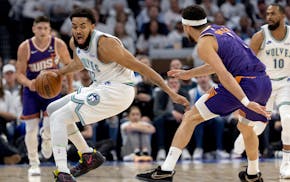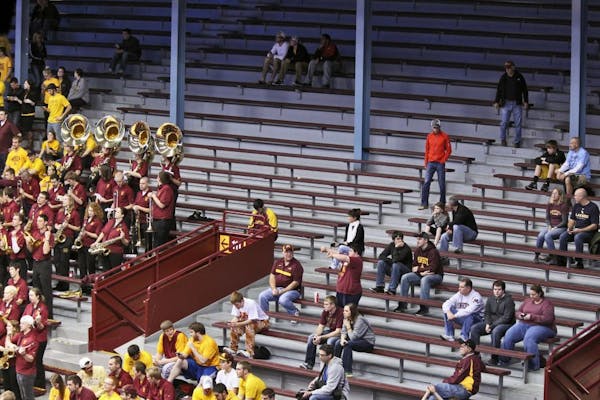The difference amounts to two or three feet in each direction, maybe 45 inches at the extreme, nothing so significant that the average football fan would necessarily even notice. But those roomy gaps between offensive linemen that Texas Tech has made a signature component of its offense have an outsized effect on the defense that must line up against it.
"It doesn't look to the naked eye like it's a big deal," said Gophers defensive coordinator Tracy Claeys, who has documented and catalogued the Red Raiders' wide-line tendencies in preparation for next week's Meineke Car Care Bowl. "But it can be."
By not standing shoulder-to-shoulder at the line of scrimmage, the Red Raiders essentially announce what the stats prove, too: They're a passing team first, second and third. A predominantly running team never would leave those lanes to the backfield unguarded, because a tailback would be smothered before he could take two steps.
But the Red Raiders, the second-most prolific passing team in the nation last season, don't hand the ball off much, only a little more than one-third of the time. Instead, they spread out the line to spread out the defense, then use a three-step drop to get the ball downfield or toward the sidelines before pass-rushers can get there.
"The philosophy of the big splits is that you don't need as athletic linemen, because you're just asking them to backpedal and not cover [running] lanes on most snaps," Claeys explained. "It means our edge rushers have to come further to get to the quarterback. It's like running around five mountains, and the ball is usually out before you get there."
And once it's out, good luck containing the Red Raiders' receivers. Texas Tech, with senior quarterback Seth Doege normally operating the offense and completing 70 percent of his passes, connected on 42 touchdown passes this season to 10 different receivers. Darrin Moore, a 6-4 senior who along with junior Eric Ward give Texas Tech two receivers who average more than 85 yards per game, also caught 13 touchdown passes. That's exactly as many as the Gophers defense gave up this season; only 20 teams in the nation surrendered fewer.
"It'll be one of the biggest challenges we've faced all year, if not the biggest," junior safety Brock Vereen said of the Red Raiders offense, which piles up 370 passing yards a game. "Those wide splits and the quick outs make it a lot harder to get sacks, so coverage will be key."
It also means linebackers figure to blitz less and cover receivers more, since Doege is so well-versed in dumping the ball in a hurry. Besides, the Red Raiders frequently split four receivers wide, keeping safeties busy and making the defense more vulnerable to draw plays and delayed runs.
"We're going to have to play a lot of different coverages, but there's a lot of pressure on the linebackers and safeties," Gophers coach Jerry Kill said. "They're going to have to make plays in space, because [Texas Tech] will throw those little 6- and 8-yard out routes. They just do a lot of stuff that makes you tackle them in space, and if you get too greedy, then they'll go over the top on you."
The extra room on the line also means that when Texas Tech does run the ball, it's easier to create a hole.
"That's one of their biggest plays, the full draw. Once they get inside leverage on a [defender], they push that guy out and the center blocks back, and the hole is bigger," Gophers linebacker Keanon Cooper said. "As much as they throw, it means we can't overplay the pass."
Of course, there are weaknesses to the wide split, too. One big one: "They can't double-team me," defensive tackle Ra'Shede Hageman, a disruptive force in the middle, said with excitement in his voice. "I'm going to be one-on-one a lot. I love the wide gaps."

KAT in early foul trouble, but came back big in second half

Another big Vikings need might not be addressed early in draft

Wild roster 2024-25: Who stays, who goes after playoff failure?

